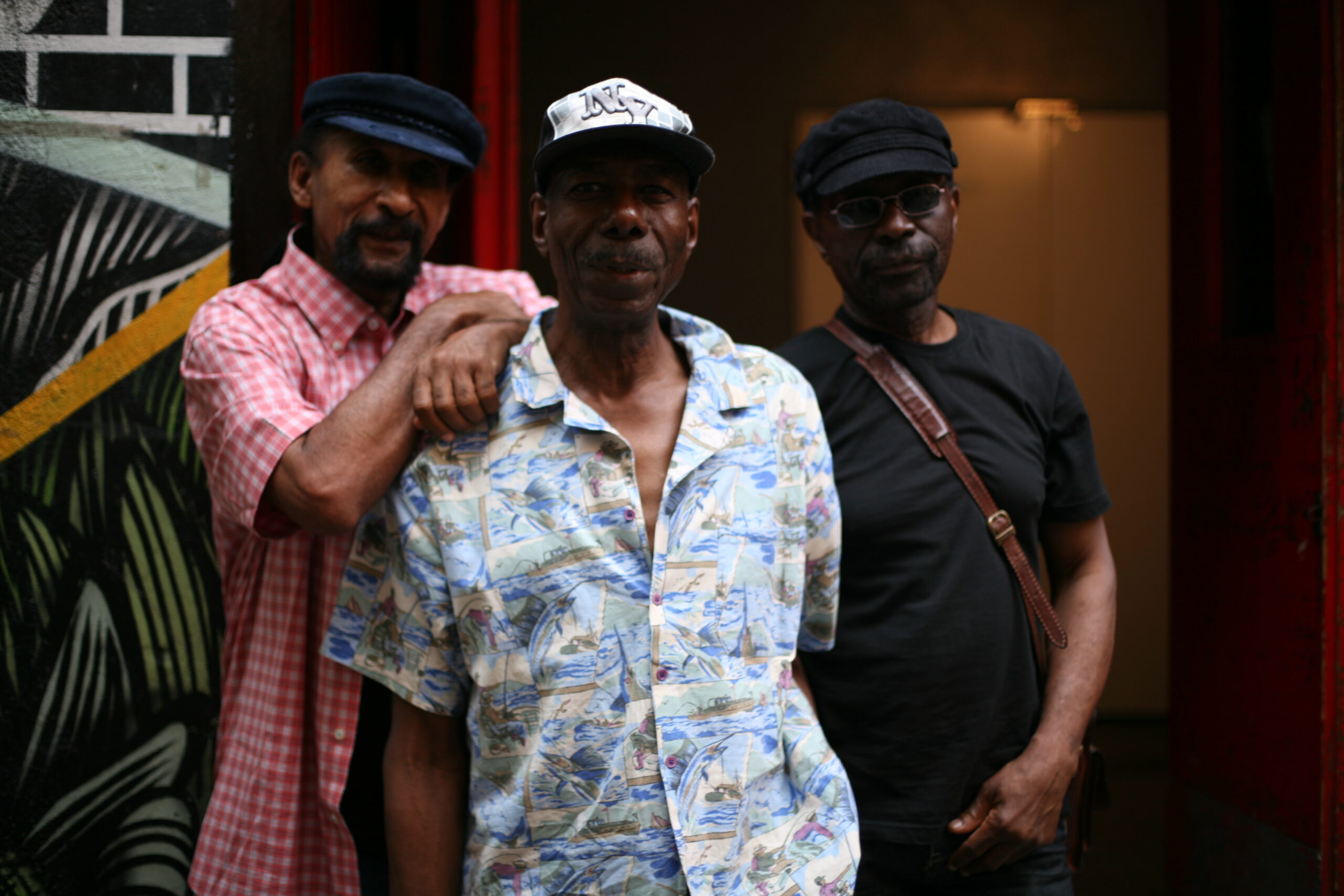
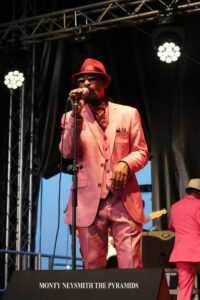


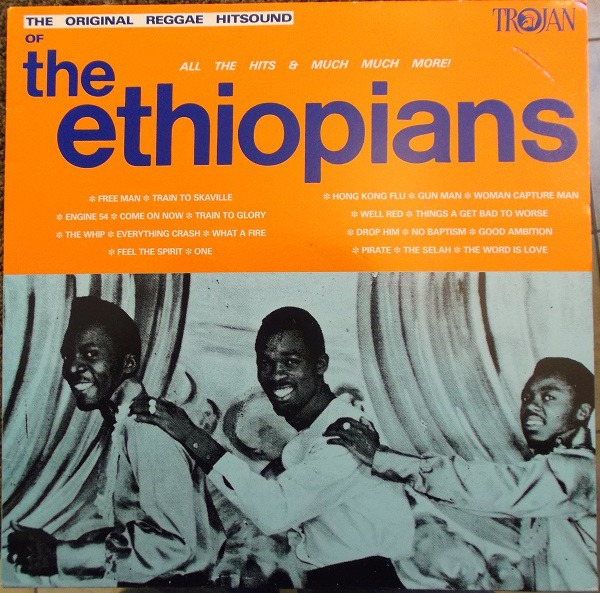
NOW BOOKING: THE LEGENDARY ETHIOPIANS: PIONEERS IN SKA, ROCKSTEADY & CLASSIC ROOTS REGGAE Entertainment with Ethiopian Music Production “The Ethiopians” (Originally “The Ethiopian Children”) were one of Jamaica’s most influential vocal groups during the golden age of Jamaican music, not only did the original quartet (Leonard Dillon, Wally Booker, Harold Bishop & Neville Duncan) spearhead the transition between Ska and Rocksteady, Dillon’s heavily Rastafarian lyrics also paved the way for the socially conscious Roots Reggae era that was to come. Neville Duncan was born in Port Antonio, Jamaica August 5, 1949. It was during his High School years that he met Harold Bishop (aka Junior). His uncle Arbry Walters (aka Tony Valdes) had a dance group called Tony Valdes and Company. This group consisted of the late Alva Watts, keyboardist and professor of music the late Prof. Rex Nettleford, Neville Black, the late Cedrick Brooks, Abnor Horn and many more singers and Ballet dancers. From the age of seven Neville started traveling around Jamaica with his uncle’s dance company. In 1962 Neville Performed at the Jamaica Independence Celebration in Port Antonio with the dance company for the first time. In 1963 Neville Duncan’s uncle (Tony Valdes) put on a concert, this is where Neville met Leonard Dillon (aka Sparrow) and Wally Bucker (aka Wally B). They all sang covers as well as originals. After the concert Wally Bucker suggested they form a singing group called “Ethiopian Children”. The new group performed every where Neville’s uncle promoted a show, In 1966 the group name was changed to The Ethiopians.
Three classic songs from the group which ironically became huge hits after Neville left the group for the first time. “Everything crash”, “Bad to worse” and “Owner fi di yard” were written by Neville Duncan, Leonard Dillon and Harold Bishop. There were giants in the earth in those early days of SKA, Monty Morris, The Ethiopians, Ska-talites, Drumbago, Millie Smalls, Prince Buster, Stranger Cole, Doreen Shaffer; and also after that, when the sons & daughters of Ska came in unto the sons & daughters of Rocksteady, and they bore children: Classic Roots, Culture Reggae, Lovers Rock, Dub, Dancehall, Hip- hop, Reggaeton, Bluebeat and Dubstep unto to them, the same became mighty music which were descended from of old, music of renown. Incredibly today some of these legendary giants still walk the earth, such as Neville “Ethiopian” Duncan, his musical career encompasses the entire history of reggae from SKA, ROCKSTEADY to CLASSIC ROOTS REGGAE through a genuine and DIRECT MUSICAL LINEAGE. NEVILLE “ETHIOPIAN” DUNCAN is one of the ORIGINAL FOUNDING MEMBERS of the ETHIOPIANS,
As with many early Reggae artists uneducated in the skullduggery world of music. Writers were very often left off of the credits, and therefore been buried in time and no records or royalties paid.
He is now the current lead vocalist via direct MUSICAL SUCCESSION through the late great LEONARD “SPARROW” DILLON. The Ethiopians are connected to a DIRECT MUSICAL LINEAGE that goes back to LEONARD DILLON, MILLIE SMALLS, DRUMBAGO, JAH JERRY, TOMMY MCcCOOK, PRINCE BUSTER, SKA-TALITES, STRANGER COLE, ERNIE RANGLIN, DERRICK MORGAN, JIMMY CLIFF, THEOPHILIUS BECKFORD, ROLAND ALPHONSO, DON DRUMMONDS, LLOYED BREVETT, THE WAILERS, TOOTS & THE MAYTALS, JOHNNY MOORE, BYRON LEE & THE DRAGONAIRES, LLOYD KNIBBS and many more! Booking Agent subcultz@gmail.com +447-733-096571(Symond Lawes) Ethiopians
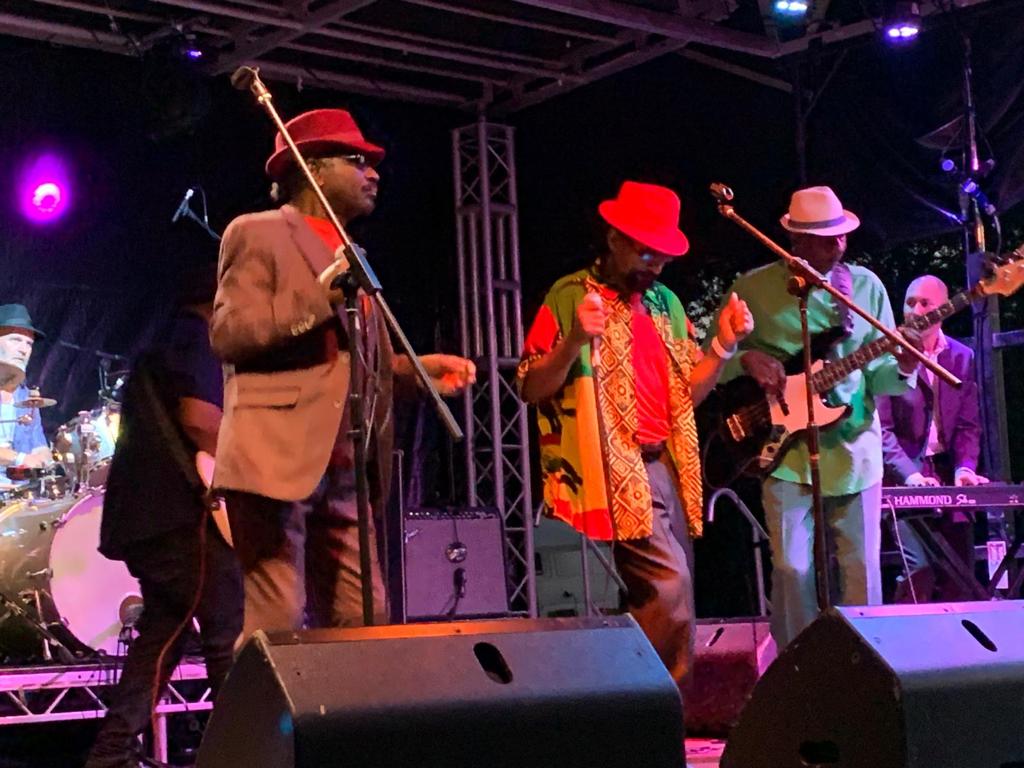
The Pyramids aka Symarip are a ska and reggae band from the United Kingdom, originating in the early 1960s, when Frank Pitter and Michael Thomas founded the band as The Bees. The band’s name was originally spelled Simaryp, which is an approximate reversal of the word pyramids. Consisting of members of West Indian Jamaican immigrants to London, Simaryp is widely marked as the first skinhead reggae bands, to target skinheads as an audience, after playing backing band with Laurel Aitkin started to witness a growing Skinhead following. Their hits included “Skinhead Girl”, “Skinhead Jamboree” and “Skinhead Moonstomp”, the latter of which was based on the Derrick Morgan song, “Moon Hop”. After the release of Skinhead Moonstomp album in 1970 and a sell out gig at wembley marred with teenage violence. Reggae was deemed too dangerous for the Conservative Britain of the time, so the band were sent to Europe to spread the Ska and Reggae music on the mainland. The band officially split in 1985 after releasing the album Drunk & Disorderly as The Pyramids. In April 2008, they headlined the Ska Splash Festival in Lincolnshire as Symarip, and later performed at the Endorse-It and Fordham Festivals. Since 2019 they are back and playing as The Pyramids across the world to mark 50+ years of Trojan records.
https://www.facebook.com/Pyramidsskaband/
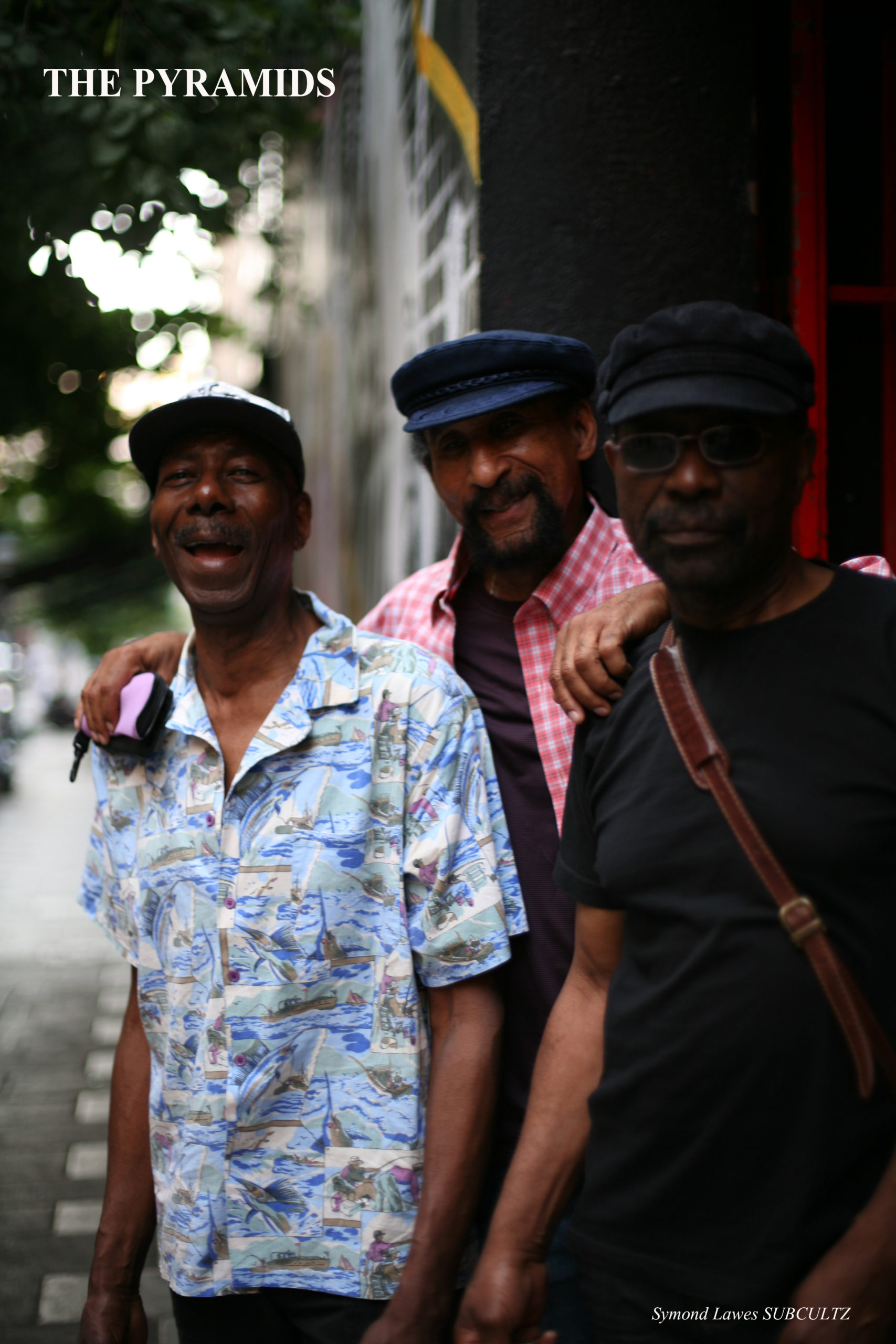
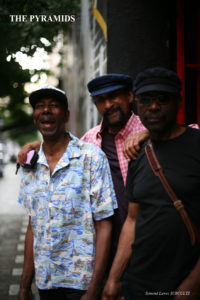
Symarip (also known at various stages of their career as The Bees, The Pyramids, Seven Letters and Zubaba) were a British ska and reggae band, originating in the late 1960s, when Frank Pitter and Michael Thomas founded the band as The Bees. The band’s name was originally spelled Simaryp, which is an approximate reversal of the word pyramids. Consisting of members from West Indies , Home of the legends of Jamaican Reggae Simaryp is widely marked as one of the first skinhead reggae bands, being one of the first to target skinheads as an audience. Their hits included “Skinhead Girl”, “Skinhead Jamboree” and “Skinhead Moonstomp“, the latter based on the Derrick Morgan song, “Moon Hop“.[2]
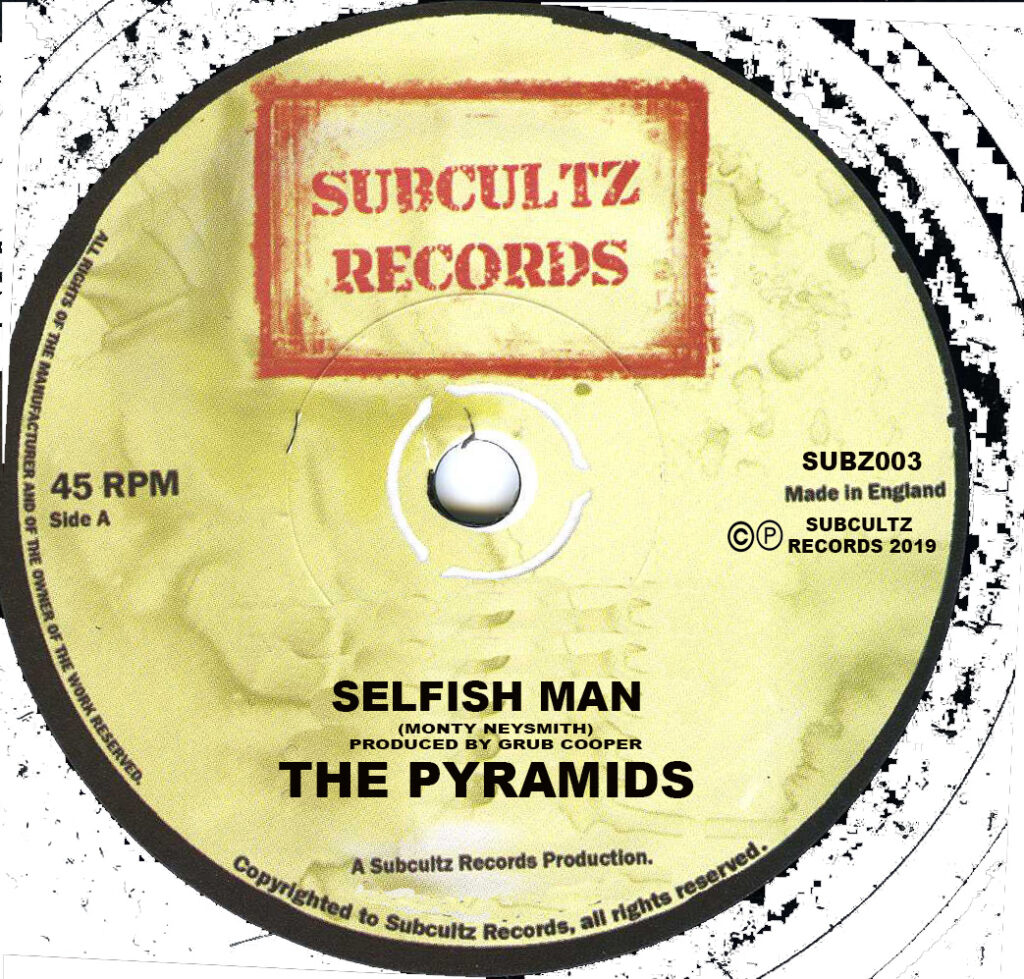
Landing as young immigrants into London from Jamaica in 1962 joining into the growing South London Reggae culture, spearheading the blending of black migrant and white London youth. Mods being the subculture of the time who followed RnB American Modern Jazz before the Skinheads replaced them towards the late 60’s, the band formed as the Bees to back leading singers Prince Buster and Laural Aitkin
Releasing the first and only pure Skinhead Reggae concept album Skinhead Moonstomp in 1970 with Trojan records
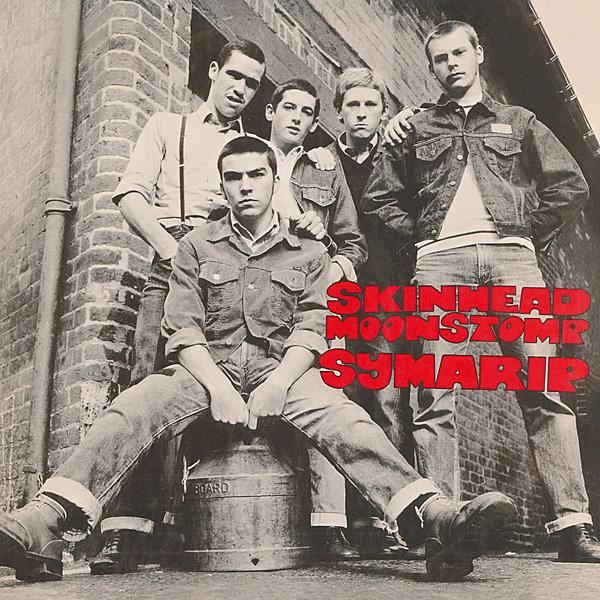
They moved to Germany in 1971, performing reggae and Afro-rock under the name Zubaba. In 1980, the single “Skinhead Moonstomp” was re-issued in the wake of the 2 Tone craze, hitting No. 54 on the UK Singles Chart. The band officially split in 1985 after releasing the album Drunk & Disorderly as The Pyramids. The album was released by Ariola Records and was produced by Stevie B.
Pitter and Ellis moved back to England, where Ellis continued performing as a solo artist, sometimes using the stage name ‘Mr. Symarip’. Mike Thomas met a Finnish woman while living in Switzerland and relocated to Finland doing the groundwork for the Finnish reggae culture through his band ‘Mike T. Saganor’. Monty Neysmith moved to the United States, where he toured as a solo artist.
In 2004, Trojan Records released a best of album including a new single by Neysmith and Ellis, “Back From the Moon”. In 2005, Neysmith and Ellis performed together at Club Ska in England, and a recording of the concert was released on Moon Ska Records as Symarip – Live at Club Ska. In April 2008, they headlined the Ska Splash Festival in Lincolnshire as Symarip, and later performed at the Endorse-It and Fordham Festivals. Pitter and Thomas now perform in a different band as Symarip Pyramid. Their Back From The Moon Tour 2008–2009 was with The Pioneers. In 2009, to celebrate the rebirth of the band and the reunion of the two original members, Trojan Records released a compilation album, Ultimate Collection. Pitter holds all copyright and trademark rights for the name ‘Symarip Pyramid’.
To book the band and any further information subcultz@gmail.com
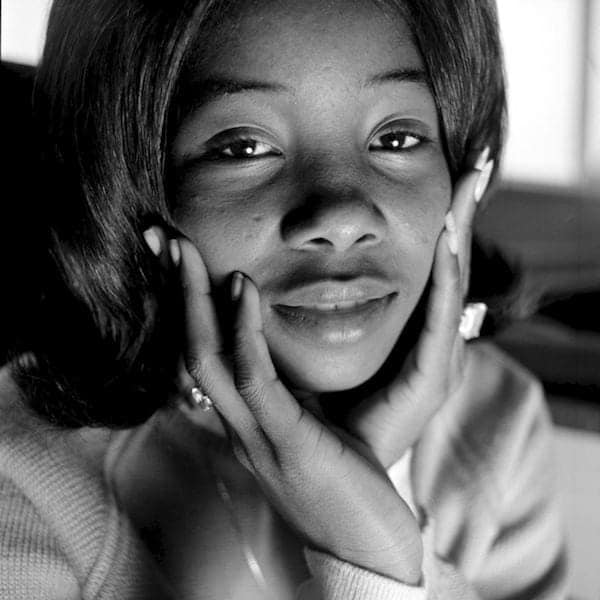

“To all friends of Jaelee, Jaelee has asked me to write this and I do so with the heaviest of hearts. Earlier this afternoon Jaelee’s mum, the beautiful and vivacious spirit that was Millie Small passed away. Millie suffered a stroke over the weekend after a suffering a serious haemorrhage in her brain and was taken to Charing Cross Hospital in London on Saturday. Unfortunately the haemorrhage was such that team at the hospital was unable to remove the liquid around her brain and her condition has unfortunately been in decline since Saturday. Earlier today her doctors took the decision to take her off life support as there was no chance of a recovery and she passed away this afternoon. The team at the hospital did a fantastic job to make sure she was comfortable and peaceful in her last few days and Jaelee was at her side until the very last moments. I saw Millie briefly at the start of lockdown from a safe distance when I dropped off some supplies for her; she was her usual effervescent self, full of warmth, smiles and life so this has come as a real shock. I’m sure Jaelee will want some time and space to come to terms with everything so if you have a message for her let me know and I will pass it on.”
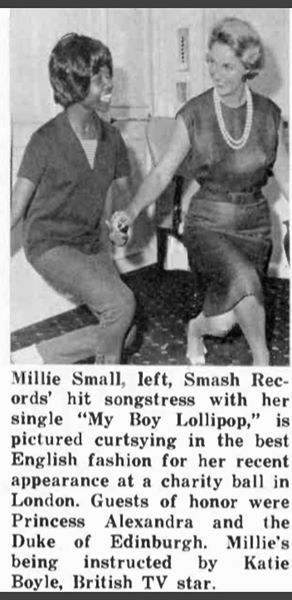
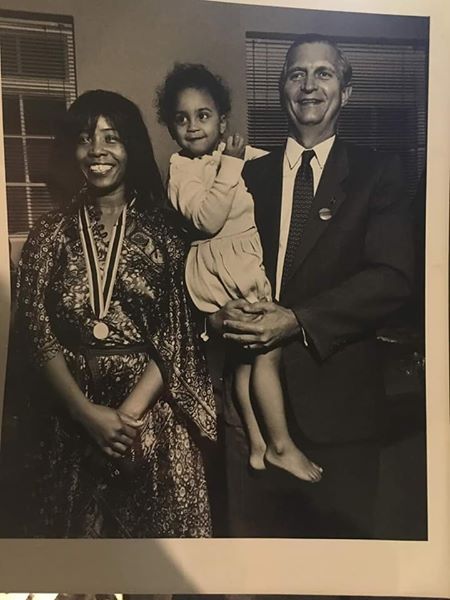
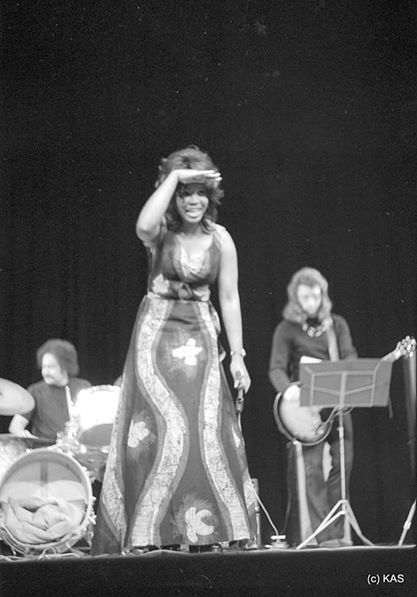
My Boy Lollypop was a favourite for many Skinheads in the UK a song many thought dedicated to them and sung by girls to their Skinhead Boyfriend for decades
The star was most famous for her hit single My Boy Lollipop, which reached number two in both the US and the UK in 1964.
It remains one of the biggest-selling ska songs of all time, with more than seven million sales.
Island Records founder Chris Blackwell announced her death and remembered her as “a sweet person… really special”.
It was Blackwell who brought Small to London in 1963 and produced her version of My Boy Lollipop, showcasing her childlike, high-pitched vocals.
“I would say she’s the person who took ska international because it was her first hit record,” he told the Jamaica Observer.
“It became a hit pretty much everywhere in the world. I went with her around the world because each of the territories wanted her to turn up and do TV shows and such, and it was just incredible how she handled it.
“She was such a sweet person, really a sweet person. Very funny, great sense of humour. She was really special,” said Blackwell.Skip Youtube post by El enano trapecista
Born Millicent Small in Clarendon, south Jamaica, she was one of seven brothers and five sisters, raised on the sugar plantation where her father was an overseer.
At the age of 12, she won a talent contest at the Palladium Theatre in Montego Bay; and by her teens, she was recording for Sir Coxone Dodd’s Studio One label in Kingston.
There, she teamed up with reggae singer Roy Panton, and they became one of the island’s most prolific duos, scoring a major hit with We’ll Meet.
Blackwell took an interest in the singer after releasing some of those records in the UK on his fledgling record label, Island, and brought her to London in 1963.
Small was enrolled at the Italia Conti Stage School for speech training and dancing lessons; and she toured the UK before cutting My Boy Lollipop with a group of London session musicians (Small claimed Rod Stewart played the harmonica solo, but he has denied being present at the recording).
Released in February 1964, it made her an international star, and helped popularise ska music around the world.
“It is the ska equivalent of Elvis’ Heartbreak Hotel or the Sex Pistols’ God Save The Queen – the disc that popularised a sound previously considered to be on the margins of mainstream consciousness,” wrote music historian Laurence Cane-Honeysett in Record Collector magazine.
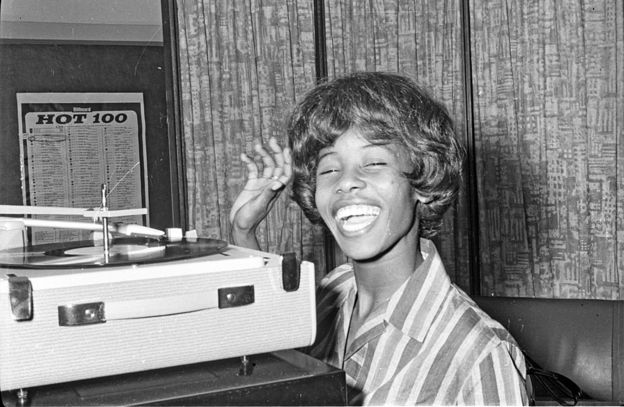
However, Small was unable to replicate the success of My Boy Lollipop, scoring only one further hit, a soundalike called Sweet William, later the same year.
But she continued to tour and record, and appeared frequently on 1960s pop shows like Juke Box Jury and Ready Steady Go.
“My life seemed very normal to me – even though I was only 17, I took fame in its stride,” she told the Express in 2016.
After leaving Island in 1970, she recorded for legendary reggae label Trojan Records, where her first single was a cover of Nick Drake’s Mayfair.
However, it was the b-side that attracted greater attention. Called Enoch Power, it was a defiant response to Enoch Powell’s inflammatory, anti-immigration “Rivers of Blood” speech that captured the mood of the UK’s Caribbean population.Skip Youtube post by lanman31337
Soon after that single, and the accompanying album Time Will Tell, Small stepped away from music, saying “it was the end of the dream and it felt like the right time”.
In later years, she lived in Singapore and New Zealand before returning to London, where she concentrated on writing, painting and raising her daughter.
When My Boy Lollipop was re-released in 1987 to mark Island Records’ 25th anniversary, the singer gave a rare interview to Thames TV, where she revealed she had, at one point, been penniless and sleeping rough in London.
However, she took the hard times in good grace, explaining: “That’s all experience. It was great. I didn’t worry because I knew what I was doing.
“I saw how the other half live. It’s something I chose to do.”
In 2011, Jamaica’s Governor-General made Small a Commander in the Order of Distinction for her contribution to the Jamaican music industry.
The singer is survived by her daughter, Joan, who is also a musician based in London.
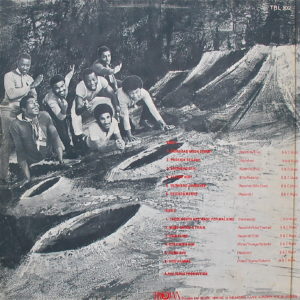

As The Bees this band are recognised as the first ever UK based Ska band, backing legendarty Singers as Prince Buster and Laural Aitkin. Changing their name several times during the 1960’s. The Pyramids were formed in the mid-sixties by six young British-based Jamaican musicians. The band were also known at various stages of their career from The Bees, The Pyramids, Seven Letters and Zubaba. In the mold of The Equals, they began their career as a straight “pop” group, consisting of founders Frank Pitter, Michael Thomas, Josh Roberts, Ray Knight, Monty Naismith and vocalist Roy Ellis and were signed to President Records.
In 1968, President bagged their first Number 1 with “Baby Come Back” by The Equals, featuring a teenage Eddy Grant on lead vocals. At the request of his label, Grant had also been working with the Pyramids, who had backed Prince Buster on a recent U.K. tour. Besides composing songs for the band (and one for Prince Buster himself, the rude classic “Rough Rider” which was later covered by The Beat), Grant also produced several tracks for The Pyramids in 1969 including the band’s debut single and sole hit, “Train to Rainbow City” which appeared on their self-titled LP.Here is a video of the song “Train To Rainbow City” written by Eddy Grant for The Pyramids:
According to sleeve notes from a best-of collection released by Trojan Records, The band’s relationship with President soured when their record ‘Mexican Moonlight’ was a hit in Germany, but the label neglected to tell them about it. As a result, the band decided to rename themselves so that they could record elsewhere without President Records knowledge. Organist Monty Neysmith came up with a plan: ‘I came up with the idea of turning Pyramids around and you leave out the ‘d’. So originally it was spelt Simaryp. I don’t know how it came to be spelt Symarip!’ So in 1969, safe in the knowledge that Presidnet Records would never unravel the secret of their true identity, Simaryp/Symaripprepared to record for their new label, Graeme Goodall’s Treasure Isle – whose chief label was ironically called Pyramid!

While working as his backing band Laurel Aitkin suggested to the boys that they should write an album for the emerging Skinhead subculture that had started to develop from the Mod culture in England, firmly picking up the Jamaican Ska sound brought into the dancehalls by the new immigrants from the colonies.
The band then recorded their first album as Symparip in 1970 and immediately became the face of “Skinhead Reggae” with songs like “Skinhead Girl”, “Skinhead Jamboree” and “Skinhead Moonstomp”, which is based on the Derrick Morgan song, “Moon Hop”. According to Neysmith, the band noticed a new element coming to their live shows: Skinheads. ‘A lot of skinheads started coming to our shows, and Roy and I said, it would be good to write a song for skinheads. We remembered a song [‘I Thank You’ by Sam & Dave] where they said, ‘I want everybody to get on their feet, and this and that, and give me some of that old soul music’. I thought, let’s change the words and put, ‘I want all you skinheads to get on your feet, put your braces together and your boots on your feet, and give me some of that old moonstomping’.In 1980, the album Skinhead Moonstomp was re-issued in the wake of the 2 Tone craze, hitting the UK pop charts for the first time and a whole new generation of fans were introduced to their sound. The Specials further expanded their name and popularity of Symarip by recording a live cover version of “Skinhead Moonstomp” as part of a medley of 60’s reggae songs on the B-side of their “Specials Live EP” which hit number one in the UK charts.

Here is a brief video of Symarip performing in Horace Ove’s documentary “Reggae” recorded at Wembley in 1970 before a crowd of 14,000. The tune is a Rupie Edwards tune called “Pop Hi”. Don’t miss Roy Ellis’s back-flip at the start of the clip:
Amazingly Ellis and Neysmith have reformed the band and plan to perform around the UK in 2008-09. They will perform a show on Friday October 31st at The Hootananny in Brixton, London. You can get ticket information here. There must be something in the water in the UK that’s causing all these bands to reform.
Here is the track list and a download to their 1969 LP “Skinhead Moonstomp” that was reissued in 1980 during the height of 2-Tone”

1-Skinhead Moonstop
2-Phoenix City
3-Skinhead Girl
4-Try Me Best
5-Skinhead Jamboree
6-Chicken Merry
7-These Boots Are Made For Stomping
8-Must Catch a Train
9-Skin Flint
10-Stay With Him
11-Fung Shu
12-You’re Mine
13-Bam Bam Baji
14-Hold Him Joe
15-Tomorrow at Sunrise
16-Parsons Corner
17-Redeem
18-La Bella Jig
19-Holidays By The Sea
20-Feel AllrightSymarip – Skinhead Moonstomp
Symarip (also known at various stages of their career as The Bees, The Pyramids, Seven Letters and Zubaba) were a ska and reggae band from the United Kingdom, originating in the late 1960s, when Frank Pitter and Michael Thomas founded the band as The Bees. The band’s name was originally spelled Simaryp, which is an approximate reversal of the word pyramids.[1] Consisting of members of West Indian descent, Simaryp is widely marked as one of the first skinhead reggae bands, being one of the first to target skinheads as an audience. Their hits included “Skinhead Girl”, “Skinhead Jamboree” and “Skinhead Moonstomp“, the latter of which was based on the Derrick Morgansong, “Moon Hop“.
They moved to Germany in 1971, performing reggae and Afro-rock in Germany under the name Zubaba. In 1980, the single “Skinhead Moonstomp” was re-issued in the wake of the 2 Tone craze, hitting #54 on the UK Singles Chart.[2][3] The band officially split in 1985 after releasing the album Drunk & Disorderly as The Pyramids. The album was released by Ariola Records and was produced by Stevie B.
Pitter and Ellis eventually moved back to England, where Ellis continued performing as a solo artist, sometimes using the stage name Mr. Symarip. Mike Thomas, who had moved to Switzerland and met a Finnish girl there, moved to Finland where he worked as a musician, doing the groundwork for the Finnish reggae culture through his band Mike T. Saganor. Monty Neysmith moved to the United States, where he toured as a solo artist.
In 2004, Trojan Records released a best of album that included a new single by Neysmith and Ellis, “Back From the Moon”. In 2005, Neysmith and Ellis performed together at Club Ska in England, and a recording of the concert was released on Moon Ska Records as Symarip – Live at Club Ska. In April 2008, they headlined the Ska Splash Festival inLincolnshire as Symarip, and later performed at the Endorse-It and Fordham Festivals. Pitter and Thomas now perform in a different band as Symarip Pyramid. Their Back From The Moon Tour 2008-2009 was with The Pioneers. In 2009, to celebrate the rebirth of the band and the reunion of the two original members, Trojan Records released a compilation album, Ultimate Collection. Pitter holds all copyright and trademark rights for the name Symarip Pyramid.
Monty Montgomery was born In Port Antonio, Jamaica. This talented and charismatic singer started to write and create music in his early years. While studying in London, England, Monty met with fellow Jamaican musicians on the weekends.
This led to the creation of the worldwide known
SYMARIP / PYRAMIDS
With hits like: Skinhead Moonstomp, Traintour To Rainbow City, Skinhead Girl, Mexican Moonlight,
All Change On The Bakerloo Line, Must Catch A Train to Night, etc.
This band reached the British Charts and toured all over Europe. Monty collaborated with the legendary “Godfather of SKA” Laurel Aitken and Eddie Grant.
Monty holds numerous awards and is listed in the Guiness Book Of British Hit Singles. Voted as one of Top Reggae Artists of all times by Billboard magazine. Monty’s versatile songwriting genius is his biggest asset. His many years of performing all over Europe, USA, Africa and the Caribbean, including the annual Sun -Splash in Jamaica, has given him the experience and skills that makes him the ultimate professional that he is today. Several of his songs have become staples on the list of many young SKA bands around the world. Sharon Woodward’s “Thank you, Skinhead Girl”, a documentary film made in the UK, includes Monty’s penned “Skinhead Girl”. Monty Montgomery’s albums: Seeds, Massive Are You Ready , Crucial Vibes and Back To Jump Street established him as a solo artist in the reggae world.
Miss Goosy (Audio and Video) is an ideal party mix and the video is very funny. It is now available @ CDBaby.com
Monty also was a finalist in 2008 Jamaica’s Festival with the song “My Jamaica”.
Now his latest work “Yah Mon” ranges from SKA to Reggae, and will with no doubt stand out. Songs like “Yah Mon”, Sweet Suzie”, “It’s time again” and “Kingston City”, just to name a few.
Monty’s latest single “The Freak In Me” was produced and arranged by Grub Cooper, from the number one band in Jamaica, known as FAB 5.
Monty and Jump up Records teamed up to release four new titles on vinyl. “Spirit Of 69 ” is a must to listen and dance to.
Monty’s live shows are engaging and energetic, and he always leaves his audiences feeling positive and happily skanking, begging for more.
FORTIS FOREVER
Monty is now a stand alone artist playing both the Symarip classics and his own work written over his years as a reggae legend
for bookings please contact Symond at subcultz@gmail.com
Tickets for 2016 are available HERE
CONFIRMED ACTS
INFA RIOT Punk – Oi! 1982 Legends
ROUGH KUTZ
FECKIN EJITS
THE HACKLERS – SKA
GRADE 2
CROWN COURT
TEAR UP from Watford, A brand new young oi! act
Dekkertones a leading British Ska Tribute act, to get the party started
PISTONES (Finland)
SPECIAL GUESTS WILL BE ANNOUNCED AT THE EVENT
Bands and DJ’s wishing to perform, all info and enquiries, contact Symond at subcultz@gmail.com
Video made in 2013
The Great Skinhead Reunion, Brighton, www.subcultz.com
The Great Skinhead Reunion Brighton Every Year, the first weekend of June, Skinheads come from across the globe to Brighton seafront. for full event details go to www.subcultz.com
Posted by Skinhead Reunion Brighton on Saturday, 2 April 2016
FULL 3 DAYS EVENT, YOUR WRISTBAND IS VALID THROUGH OUT, YOU CAN USE IT FOR AS LITTLE, OR AS MUCH AS YOU WANT. THE EVENT WILL SELL OUT, AND THERE WILL BE NO ADVANCE DAY TICKETS AT A REDUCED DAILY RATE , IN ADVANCE.
The line-up maybe subject to change, as so many band members and dj’s are involved. Babies coming along, alcohol, world wars and famine can be unforeseen, but the Great Skinhead Reunion, is more about coming to Brighton to see all your friends and making some more, for 3 full days of mayhem.
SKINHEAD ONLY HOTELS .
Add to your experience, by getting a room in our Skinhead only hotels. Conveniently located, with a short walk to the venue, and no moaning neighbours to worry about. The rooms vary in size and cost, to fit your needs. all within an easy walk to the skinhead reunion venue. We have hotels exclusive to the Great Skinhead Reunion guests and bands. Party party !! please email subcultz@gmail.com with your requirements, to be booked into the Skinhead Hotels
For those on a low budget, its worth checking Hostels and campsites, but my advice, is to get in the reserved hotels, for a nice stress free, clean and comfortable holiday in Brighton.
TRAVEL INFORMATION
Brighton is situated on the south coast of England, approximately one hour from London. London Gatwick is the nearest airport. There are regular direct trains and National Express buses. The next nearest is Heathrow, There are also direct trains from Luton Airport . Its advised not to fly to Stansted, as this is a long way, and you risk losing valuable drinking time
The nearest ferry port serving mainland Europe is Newhaven -Dieppe . Newhaven is about 20 min drive to Brighton. Dover is about 2 hours to Brighton
PARKING ZONES – one of the worst aspects of Brighton, is a lack of affordable parking. my advice is to use street parking on the suburbs of Brighton, its a reasonably safe place. a good bus service will take you into brighton centre (churchill square) and a short walk from there to the sea front. worth allowing the extra hours work, to save yourself serious parking charges
All Event Enquiries email Symond at subcultz@gmail.com. phone (uk) 07733096571
The Facebook community group Facebook group
Continue reading Great Skinhead Reunion Brighton, Big 6. 2016BUY TICKETS 9-10th Oct 2015
Featuring Live bands Citizen Keyne, Skapones, Adverse society, Tear Up. Toxic. Anti Social
Full DJ line up for a second room, playing SKA, And all Skinhead related music
The Great Skinhead Northern Gathering 9th + 10th October In Sunderland. Our second year of our Autumn Gathering, as a celebration of the skinhead culture A full day of Dj’s in one room, and Live bands in another. A full line up to follow, watch this space. Ony £15 for the whole event. Cheap beer and rooms nearby. Friday will be wristbanded 7pm -3am bands and DJ’s. Saturday 10th noon -5pm free entry meet and greet. After 5pm it will be wristband only, Live bands and DJ’s The weekend wristband £15 is valid for both nights
DJ Coordinator is Sean Marshall
facebook event page, please share
This is a family friendly event. Children are welcome until 9_9:30pm, but must be off the premises by then, by law so all are welcome, the venue is The Corner Flag. Central to the city center in a good location for local transport connections, trains, metro etc it’s the corner flag located at high street west, with plenty of fast food outlets and restaurants nearby, there will be something for everyone a good mix of Oi,ska,two tone a little bit of everything, a good size venue capable of holding this event, any bands wishing to play, Oi,Ska,Two Tone also any dj’s wishing to spin a few disks, should contact subcultz@gmail.com. www.subcultz.com If you missed last years then you have to come to this one, good music,good beer,with very good people
Great Skinhead reunion documentary DVD, coming soon,.For pre orders click HERE
This event is now done, but we are back for 2016 on 3-4-5th June on Brighton beach again, for The Great Skinhead Reunion big 6. we will be putting things together as we go, finding the very best bands on the scene, organising DJ’s, sorting out peoples tickets and hotels. To make the big 6 even bigger. Massive thanks to everyone who has supported the skinhead subculture, and the reunion. see you all soon.
Tickets for 2016 are available HERE
Bands and DJ’s wishing to perform, all info and enquiries, contact Symond at subcultz@gmail.com
Details below are the 2015, New bands will be performing for 2016.But i will leave this link up, to give you the idea, of what the reunion is all about
Video made in 2013
THE TICKETS ARE £40 EACH, WHICH IS FOR THE FULL 3 DAYS EVENT, YOUR WRISTBAND IS VALID THROUGH OUT, YOU CAN USE IT FOR AS LITTLE, OR AS MUCH AS YOU WANT. THE EVENT WILL SELL OUT, AND THERE WILL BE NO ADVANCE DAY TICKETS AT A REDUCED DAILY RATE , IN ADVANCE.
<
The line-up maybe subject to change, as so many band members and dj’s are involved. Babies coming along, alcohol, world wars and famine can be unforeseen, but the great skinhead reunion, is more about coming to Brighton to see all your friends and making some more, for 3 full days of mayhem.
DISCOUNTED HOTEL RATES QUOTE REFERENCE SUB001 When making a booking Hotel rooms, of all sizes. 3 hotels available to fit your requirements email Ed at info@granvillehotel.co.uk or phone 0044 1273 326302. You must quote the reference SUB001 to get your rooms. The rooms vary in size and cost, to fit your needs. all within an easy walk to the skinhead reunion venue. These hotels are exclusive to the Great Skinhead Reunion guests and bands. So no public to worry about. party party !!
YOU CAN NOT BOOK THESE HOTEL ROOMS VIA THE HOTEL WEBSITE, YOU NEED TO CONTACT THEM DIRECTLY, AND GIVE THE CODE, AND SAY YOU ARE ATTENDING THE SKINHEAD REUNION
For those on a low budget, its worth checking Hostels and campsites, but my advice, is to get in the reserved hotels, for a nice stress free holiday in Brighton
PARKING ZONES – one of the worst aspects of Brighton, is a lack of affordable parking. my advice is to use street parking on the suburbs of brighton, its a reasonably safe place. a good bus service will take you into brighton centre (churchill square) and a short walk from there to the sea front. worth allowing the extra hours work, to save yourself serious parking charges
All Event Enquiries email Symond at subcultz@gmail.com. phone (uk) 07733096571
The Facebook community group Facebook group
Brighton can lay claim to being a big part of the birth of Skinheads. During the Mods and Rockers battles of the 1960’s when London lads would descend on the South Coast for bank holidays to Peacock and cause ‘Bovver’ the term Skinhead was born, to describe the short haired Mods.
Becoming probably the biggest and longest standing of all the youth fashion subcultures, Skinhead has matured and now become a worldwide community. Distinctly recognized by almost military shaven head, boots and braces. The real skinhead is a working class product of the British council estate ‘salt of the earth character’ fiercely proud of his identity,with an obsession for clothing, style and music, equaled only with his love of beer.
On the first weekend of every June, since 2011, Brighton has seen an ever increasing number of Skinheads and their lovely Skinhead Girls invade Brighton. Boots, Braces, pristine clothing and a cheeky smile. Attracting scene members from right across the globe, to Madeira Drive, overlooking the beach. A full three days of Skinhead related entertainment is laid on. DJ’s playing hyper rare vinyl, from the early days of Jamaican Ska, through to modern day Street Punk and Oi. Live bands hit the stage of the Volks bar each night. With various aftershows happening until the early hours, to keep the party buzzing.
Acts appearing so far booked
Peter and The Test Tube Babies
Make no mistake! Peter And The Test Tube babies have written some of the best punk songs ever. In the early ’80s they stood out, above all other bands to emerge, with their tales of the hazards of being young punks in Brighton – “Banned From The Pubs”, “Intensive care”, “Run Like hell”, the list goes on…all had the Test Tubes hallmark, combining personal experiences, real cool tunes and, most important of all, maintaining a great sense of humour.
At the time, their gigs were fun filled events with electrifying tunes and plenty of entertainment. Harmless humour of those early gigs was captured on their debut album, “Pissed And Proud“. From those early gems, the Test Tubes just got better and better. The next crop of songs, “Jinx”, “Blown Out Again” and “September” all featured on “The Mating Sounds Of South American Frogs“, which stayed at number one for four months at the top of the independent charts. A US tour followed, climaxing with a 4,000 capacity sell out show at the Los Angeles Olympic Auditorium.
The Test Tubes first US domestic release, “href=”http://www.testtubebabies.co.uk/discography/discography04.htm”>Soberphobia“, is probably one of their finest moments. The use of keyboards and sax on some tracks may not have been what people expected but it worked a treat. The much sought after CDs “Cringe” and “The $Hit Factory” again proved the Test Tubes unpredictability in the early ’90s.
The mid ’90s saw the release of “Supermodels” and the departure from the band of Trapper and Ogs (bass and drums), excellent musicians. The band brought in fresh blood, the young and dynamic Rum and AD on bass and drums respectively. To promote the Supermodels album the band then went on a 25 date tour of Germany, Holland and Switzerland.
On their 20th anniversary in 1998 the band flew to Germany to record the “Alien Pubduction” album, their first with AD and Rum. The band also undertook a massive US and Canadian tour that lasted five weeks, lots of UK gigs and of course the annual German Christmas tour.
Rum quit in 1999 due to the punishing tour schedule. Paul ‘H’ Henrickson, known to the band and a Brighton stalwart, took over on bass. The band hit the road with renewed vigour touring repeatedly throughout the UK, Germany, Ireland, USA, France and making an impact on the summer festival circuits. Early in 2001, after years of taking punk to the masses, the pressure took its toll and A.D. left the band. Harp playing Christophe from Paris took over on the drums, beating other hopefuls to the job in hard fought auditions. The band were soon back on the road touring all over the world including a visit to The Shetland Islands!
Drums rolled again in 2003 as Christophe yielded the role to Dave ‘Caveman Dave’ O’Brien. Christophe joined Peter and Del in the studio to aid with their creation of vibrant Test Tube material for the twenty first century.
In 2005, after a seven year hiatus, the band released “A Foot Full of Bullets“, recorded at Ford Lane Studios, Ford, West Sussex. The album was definitely worth the long wait demonstrating a familiar core sound matched with smart self assurance gained from decades of experience. Storming on with characteristic vigour, the Test Tubes gained praise as “the best band of the weekend” (Lars Friedrickson) at the WASTED festival before closing the year with the annual German Xmas Tour 2005.
A remix of “A Foot Full of Bullets” was produced with contributions from Campino (Die Toten Hosen) and Olga (The Toy Dolls) at the start of 2006. “For a Few Bullets More” was released in August. Not long after, web master Dr Nigel announced he was bowing out of the band’s website after years of valued service. The band are all indebted to Nigel and wish him all the best. Creating a new web presence took the band through to the next big tour date…The band flew down under in September to play Australia and New Zealand for the first time.
The Test Tubes remain one of the best punk bands to come out of Europe. Appearing on the first Oi! albums in the early 80’s, The Test tubes have remained a favourite for many of us, ever since. See them live at the Great Skinhead Reunion
Rough Kutz (SKA)
The Rough Kutz where formed by Hazza (Hammond organ), Brigga (vocals) and Rat (guitar) in 1994. The band changed the band line-up over the years, the current line-up consists of four other members; Mucka (vocals), Tony (bass), Sean (lead guitar) and yatesy(drums). The first studio album, A Bit O’ Rough was released in 1998 on Antwerp-based ska label Skanky ‘Lil Records. After this release the band began touring Europe. They released second album Welcome to our World in 2002 and, in 2006, followed with Another Week Another War. On this album Roddy Radiation from The Specials played guest lead guitar.[1] In 2006, they also performed a European tour with Radiation on guitar.in 2010 the Rough Kutz released their fourth album gangsters playground on Rk records.in 2012 the Rough Kutz recorded a version of the specials song Rude Boys Outa Jail, for the specialized charity album in aid of the teenage cancer trust.they performed live at the cd launch gig in the home of Two tone records, Coventry.
The Crack. Although they are best remembered as being members of the Oi! punk movement, the Crack were actually closer to the musical stylings of punk popsters 999 and mod rockers the Chords than any of their Oi! brethren (the Business, Cockney Rejects, etc.). On the musical scene since 1982, often compared to Slade, in their musical sound. They won a national televised battle of the bands, probably one of the only skinhead bands to have gained any positive recognition on British Televisions history. the Crack didn’t release this debut album until 1989. Like many bands of the era, as the main skinhead culture nose dived in the UK. The Crack, together with Argy Bargy and Cock Sparrer fought the hard times in Europe, to bridge the gap, and keep the flame burning, taking Skinhead and Oi music worldwide.
Franky Flame. A legend of the Skinhead culture. Franky will be there for his one man Cockney Joanna ‘Pie n Mash’ knees up
In the scene for many years,with his band superyob, Franky plays a traditional london dancehall version of oi tunes, making a great sing a long, beer filled malarkey
Last Seen Laughing (Denmark)
For a long time now Aarhus has been Denmarks Oi! capitol and Last Seen Laughing is another band in that tradition, which we are proud to belong to!
Last Seen Laughing is a 3 piece band, with members who all come from OI/Punk/Hardcore musical backgrounds. We’ve all played in various bands over the last approx. 20-30 years. We have played together about 4 years and had our debut in our hometown of Aarhus, Denmark in Dec. 2008.
The Line-up is:
Steen – Bass, Chorus : Frontman, leadsinger & guitarist in legendary Danish punk band The Zero Point still goin’ strong since 1979. Drummer in Hardcore outfit War of Destruction.
JP – Drums, Chorus : Drummer in Oi! band The Hoolies. Singer in Oi! Band The Outfit. Drummer in 80’s punk band Dayli Kaos and 90’s punk band deFuldeprofeter (The Drunken Prophets).
Kres – Guitar, leadvocal : Guitarplayer in 90’s Hardcore band Toe Tag, bassplayer in 90’s Hardcore band Tiny Toons. Guitar in 90’s punk band deFuldeprofeter and Guitar in The Hoolies and The Outfit.
After The Outfit decided to call it a day, Kres as being the main idea holder of the band, had tons of unused material, decided to start on his own along with brother JP on Bass. Back then we called ourselves The Jutland Muster. Jutland being the part of Denmark where we live. After about 8 months JP couldn’t find the extra time to play music, but Kres kept on with various bass players and drummers (very hard to find musicians that want to play or know oi music in Denmark). It was always kept as a 3 piece band to keep it minimalistic, aggressive and tight. After approx. 2 years of practicing and creating songs JP decided to join back in and took over the drums. 3 months later in late 2008 we hi-jacked Steen to play bass and Last Seen Laughing was born.
In late 2009 we went into the studio to record a demo with 3-4 songs, but ended up with recording 9 songs! We sent out the material to different labels and negotiated with especially one of them. Things dragged on and time went by and we played more and more shows both at home and abroad, and we kept on writing more material until we by the end of 2010 was ready to hit the studio again. This time we recorded 5 songs. 1 song was for a local comp which hasen’t been released yet and the 4 remaining songs was together with the 9 previously recorded songs was going to be our debut album. Suddenly we were contacted by Randale Records in Germany, who had received our 9 song cd earlier, and they wanted to do an album with us. We seized the opportunity and accepted their offer after a bit of negotiating with both them and the other label we had talked to earlier. That resulted in our debut album being released in June 2011. The vast majority of people who have heard it are very pleased with it and reviews of the album are all in all very positive.
Then later that year we landed ourselves a part of a christmas comp. That song brought about the idea of a split christmas Ep together with fellow hometown band The Guv’nors. It’s a picture Ep in the shape of a christmas tree. It has to be the ugliest record you’ve ever seen!!!
We recorded material for the next album & an EP in 2012. The EP containing a teaser from the new album and a song that’s solely on this release. It was available from Randale Records on dec. 20’th 2012. It sparked the interest for the new album to come and the response was really good. The plan was that the new album should be released a couple of months later but due to circumstances it was delayed untill October 2013. The titel of our second album is “As true as it gets” and it’s also released by Randale Records. The impact of this album has really lifted the band to a new level and made our name more well known.
Last Seen Laughing is inspirered by the second wave of Oi! from the 80’s as well as the Oi! Revival of the 90’s. We take bits and pieces from many different bands and mix it into our own sound. The style is aggressive, minimalistic and catchy!
Last Seen Laughing has already made quite an impact on the scene in Denmark especially with the song ”Tæsk” (translates Beating or more precise ”to get your head kicked in”), which is somewhat of a hit or anthem in the underground. These last couple of years has also seen a very fast growing interest for Last Seen Laughing from abroad and we’ve already been to England, Norway, Sweden, The Netherlands and Germany to play gigs. So far Last Seen Laughing has played a lot of concerts in Europe and we still have more to come.
The future for Last Seen Laughing looks remarkably bright if you look upon the bands history so far!
The Dodgy Few (Ireland)
A new young band from The heart of Ireland. The amazing vocal talents of female vocalist, Shannon Doyle, Playing their own original Reggae /Ska songs. already kicking up a storm, right across the ska scene in Ireland and the UK. We are very excited to see what they can pull off infront of a full house of skinhead veterans, at Brighton.
Gerry Lane (Guitar),
Ciaran White(Drums)
Alan Daly (Bass)
Robbie Collins: Trumpet
Andy Mullan: Saxophone.
Skinheads from across the pond, Minneapolis, USA
Degeneration is Oi! with a capital “O!” These boys have been having a laugh and having their say for 20 years. The band formed in 1994 in Minneapolis, where the music scene was not to favorable for a bunch of skins to be shining out. But they carried on, despite the negative press skinheads were having at the time. The band storms the stage and play unrelenting music, with scorching guitars, heavy bass, and growling vocals. They know what they what needs to be done and then proceed to get it done.
The boys released their first single “Blind.” in 96. They played hundreds of gigs and then put out “Oi! For the Kids”, where they had their first success. They quickly followed that up with a new drummer, who’s still here today, and 2 more 7”s. “Boots and Braces-Studs & Chains” and the “Young Life EP”. Going from strength to strength, they put out their first cd “Carry The Torch”.
Moving forward, always staying true to their Oi! roots the band, continued on. They recorded a few songs for compilations, and things slowed down. They stepped away from the stage and raised some families. Never forgetting the music they love, they knew it was time to let the world know that they were still standing tall!
Their new LP “Standing Tall” will be released on 11/11/15 and they will be coming to Europe for the first time to play both old and new songs. What a better place for a bunch of skinheads to hear them then at the Great Skinhead Reunion!
Degeneration is
Jason is Lead GuitarGreg on DrumsPhil “Ox” on BassMe VocalsChris “Joker” Rhythm GuitarOi OI Music
SKAbretta, is a 6 piece band that takes you through the years of SKA and Reggae from the early Blue Beat sounds of Prince Buster to the 80’s revival, covering everything in between. Created in mid 2012 they have quickly become a local favourite as there blend of old and new styles caters for every taste whether your in to 2-tone or the more traditional Trojan groove you are in for a night to remember.
In less then a year Skabretta have gone from playing local boozers and clubs to playing venues such as the 12 bar Club in Denmark Street, Folkstone SKAfest and the iconic 100 Club on Oxford Street. With a packed diary and gigs coming in up and down the country, they will be coming to a town near you soon.
Our DJ’s are selected like a fine wine, from around the world of skinheads. Each DJ has a strong history. They all come and play the best music you are ever likely to hear, and most run their own nights elsewhere. so please support these guys and girls, who are the backbone, of the Skinhead Reunion and the scene overall
Gary Olas, The Upsetter
Olas has been hosting our Friday nights since the first Reunion.Old school vinyl sound system playing the best in all types of reggae with gigs all over the world. This is also runs the OLAS BOSS REGGAE RADIO SHOW. Twice a week OLAS BOSS does two internet radio shows, Wednesday at 7pm until 9pm playing the very best in roots and dub reggae across all time dates. The later Wednesday, from 9pm till midnight, show is boss reggae/rocksteady/ska – two tone at ten for fifteen minutes – then at 11pm, the world famous Dabble Under the Duvet. An hour of the finest old school lovers rock. All genres of reggae are covered over the two shows. You can also listen again at any time. the radio site iswww.channelradio.co.uk. OLAS BOSS REGGAE RADIO SHOW.
Barry ‘Bmore Mcvowty’
From the Wycombe skinheads, been active in the skinhead scene since 1979. One of the very best DJ’s, with a wide knowledge of eclectic music. Dont miss Bmore performing as he spins. And dont be surprised with what hits the decks, Bmore plays from the soul!
Skavoovie
SkavooVie! .. Infectious SKA Beats and Killer Diller Rocksteady rhythms. WHERE? Currently enjoying a monthly residency at Upstairs at the Mez, 4th Saturday of the month. Serious SKA choons on original 45’s from the vinyl vaults of Blue Beat, Studio One, Dr. Bird, Top Deck, Treasure Isle and many more…Scorchers!!!
A regular and key player in Brighton, with a record collection, most DJ’s would die for.
Weekend tickets are available at www.subcultz.com
Lee Evans. Has been around the London scene, longer than red buses. From the Wycombe Skinheads, Lee was a well known face DJ’ing around London in the 80’s with bands like the Riffs and Hotknives, Desmond Dekker and Laural Aitkin shows, to his credit. Now running regular DRC nights
Martin Long..I’d like to welcome Martin Long from Portsmouth, to our list of guest DJ’s at the Great Skinhead Reunion 5. Martin has been a long term skinhead and very active in the skinhead and scooter scene for many years, and its a pleasure to have him play for us in 2015
Rob ‘Double Barrell’ Powell. Is active on the London circuit and Carnaby Street skins, and Elephants head meet ups of the modern day. And his only fools and scooters events. Playing a cross section of skinhead related tunes
Fuxy AKA The Hungarian’s Boss Sounds
Active on the Dublin scene, Live and direct from Hungary.
Playing, punk, Oi! and Boss sounds
Skashack Toast, will be back in residence for 2015, playing his saturday setS
SONGBIRDS: PIONEERING WOMEN IN JAMAICAN MUSIC
BY HEATHER AUGUSTYN RELEASED
CHESTERTON, IND.—Songbirds: Pioneering Women in Jamaican Music by Heather Augustyn has been published by Half Pint Press and is now available. The book is a comprehensive look at Jamaican vocalists, instrumentalists, record producers, dancers, wives, mothers, and deejays who helped to shape the course of Jamaican music on the island and worldwide. Songbirds: Pioneering Women in Jamaican Music is the fourth book from Augustyn on Jamaican music and culture.
The book features dozens of interviews with women who found a way share their talent in a culture and industry that was marked by brazen displays of masculinity. They endured harassment and received little or no pay to perform as backup or alongside or in front of the male musicians. They sacrificed family and home for a life in the spotlight, or they brought their babies with them on the road. They took over the studio and made it their own, or they suffered unimaginable violence, even murder. They changed the course of music all over the world. The book also features over 100 exclusive photographs and memorabilia that supplements personal narratives and archival material.
Heather Augustyn spent two years researching and talking to such women as Millie Small of “My Boy Lollipop” fame who rarely grants interviews, and she obtained photographs from her personal photo album. Others include Enid Cumberland of Keith & Enid who is now in her mid-80s; Janet Enright, the country’s first female guitarist who performed jazz in the 1950s; Marcia Griffiths of the I-Threes, Bob Marley’s backup singers, and vocalist for the Electric Slide, the staple of every wedding reception; members of the first all-girl ska band, the Carnations, featuring the parents of Tessanne Chin, winner of The Voice; Doreen Shaffer of the Skatalites; Patsy Todd of Derrick & Patsy and Stranger & Patsy; Althea & Donna, and dozens of others.
Augustyn is also author of Don Drummond: The Genius and Tragedy of the World’s Greatest Trombonist, McFarland 2013; Ska: An Oral History, McFarland 2010; and Ska: The Rhythm of Liberation, Scarecrow Press 2013. She is a correspondent for The Times of Northwest Indiana and an adjunct professor at Purdue University’s North Calumet campus. She lives with her husband and two boys in Chesterton, Indiana. Songbirds Pioneering Women in Jamaican Music is available at Here and amazon.com.
From April 26, 1964–”Something had to come after the Twist and it appears to be the ‘Jamaica Ska,’ just imported from the Caribbean island by dance lovers of New York’s jet set. Here, at Shepheard’s night spot, where the infectious new dance made its U.S. debut, lovely Carol Joan Crawford (left), Miss World of 1964, pays close attention to the dancers. The ‘Ska’ may be simply described as ‘up-beat blues with a shuffle rhythm.’ Its name evolved out of the sound of the guitar’s up-beat stroke. Miss Crawford, who also hails from Jamaica, is currently touring the U.S. for the first time.”
The premiere of the ska in America was controversial then, as it is now. I recently found an article from 1964 called “Dissension in the Ska Camp” that shows even when musicians were in the thick of it, it was a contested issue of who was included and who was excluded, who created it first and who was following suit. So I today I share this article that appeared in the Sunday Gleaner, April 26, 1964 that shows these topics were just as relevant and talked about then as they are now, even more so. The article has no byline so it is not evident who wrote the piece, but Ronnie Nasralla and Prince Buster chime in with their opinions.
First, let’s set the scene. Referenced in this article is the event at Shepheard’s Club, seen above in the photo. This nightclub was located in the Drake Hotel on Park Avenue in Manhattan. It was a hotspot. It was hip and posh and cool. Big stars stayed at the Drake, including Frank Sinatra and Muhammad Ali and later Led Zeppelin and Slade. But Shepheard’s was also swanky and the hot dances of the day, like the Frug, were not only danced here, but unveiled here. So too was the Ska. Shepheard’s even produced a flyer called, “How to Do the Newest Discotheque Dances at Shepheard’s in New York’s Drake Hotel” with step-by-step instructions to dance the Jerk, Watusi, Frug and the Monkey.
The event at Shepheard’s Club was prior to the World’s Fair. This event was held in April, whereas the World’s Fair wasn’t until August of 1964. However, Jamaica’s tourism efforts began before the World’s Fair in anticipation of creating a buzz and capitalizing on the dance craze trend. You may remember the photo I posted with Arthur Murray’s wife and Ronnie Nasralla from this evening at the Shepheard’s Club, and above is another rare gem.
Without further ado, the article:
National sound hits New York but now the argument flares as to what it is and who started it!
DISSENSION IN THE SKA CAMP
LIKE a raging fire, the promotional tour of the Jamaican National Sound, the Ska, has started a smoldering in the underbrush of the Kingston music world from which this distinctive brand of music was born.
Everyone wants to prove who is the true exponent of the Ska and who originated it? What is the authentic style of the Ska dancing? Successful though the promotional tour to the U.S. was, enthusiastic though the reports which came back treat the appearance of a Jamaican troupe of dancers and artistes at the Shepheard’s Club, there is dissension in the camp.
Some artistes who made the trip say their sound was not promoted as much as certain other sounds. Some of the artistes say that some of the other artistes didn’t have a clue about Ska dancing and in fact did the Monkey, the Wobble, the Twist . . . anything but true Ska.
Reports from the other side say that the moves done at Shepheard’s were moves decided on and rehearsed for several nights, together, before the team left the island.
To the accusation that other records were promoted over others, we discover from Mr. Winston Stona of the Jamaican Tourist Board, a co-sponsor of the promotional venture that:
The junket to the Shepheard’s Ska dancing, backed up over recorded music. Shepheard’s is one of a current crop of New York Clubs called discotheques. In this night spot feature entertainment comes from records played on a large turntable, from an amplification booth much like the Jamaican sound system of the dance halls.
According to the Tourist Board spokesman, the promotional venture for the Ska, as suggested by Henri Paul Marshall and Roland Rennie, the music promotion experts who came to the island last month on the invitation of the Ministry of Development and Welfare, was that Ska records and not personal performances by the artistes, would be projected.
The records which were taken to Shepheard’s therefore, were a selection made on the suggestion of the experts who, on their visit to the island, listened to the work of various Ska exponents. The records chosen for promotion were the ones which the experts deemed most likely to catch on with the American public.
These records included the works of Prince Buster, Derryck Morgan, Eric Morris, and others known to the local Ska followers.
Why should there be dissension? Among the tunes featured at Shepheard’s was “Sammy Dead,” the old Jamaican folk tune restyled as Ska by Byron Lee and the Dragonaires, featuring the voice of Eric Morris. Certain members of the troupe to Shepheard’s say “Sammy Dead” was promoted over other tunes.
According to Mr. Stona, “Sammy Dead” was actually played twice at the beginning and at the end of the programme of Ska records which he presented to the Shepheard’s audience.
It was also revealed that “Sammy Dead” which is to be released on a Capitol label in the States was specifically promoted on the request of Capitol records.
Prince Buster and the other early devotees of the Ska say this should not be so. And they throw in the argument that in their opinion “Sammy Dead” is not a true Ska tune and why should it be played even one more time than any of the others, which are reorganized as real Ska by the real Ska fans?
Prince Buster, who took the Ska to England where it is known now as the Blue Beat, was very expressive about this. He says he is one of the originators of the Ska and sees no reason why he and others, who worked together on the National Sound, should not have got as big billing.
But who really originated the Ska? As Buster tells it, it was back in 1958 that he, Derryck Morgan, Eric Morris and others used to meet on top of an old house situated on Charles Street near Orange Street. The meetings were inspired because “as boys together, we were looking at making a brand.”
He points out that a number of Jamaican musicians had tried adopting American shuffle sounds to their own style, but it didn’t really work. There was need for “our own sound.” So those meetings on top of the house was to find out just how to make things work, how to find a Jamaican sound which the fans would go for.
Down on the ground you might say the big sound system operators Duke Reid and Coxson were evolving their own sound. It was an adaptation of certain American shuffle tunes re-recorded for the sound system dance audiences. It is said that when the experimenters offered Duke Reid and Coxson the new Jamaican sound they would have nothing to do with it.
According to Buster, the new sound when it was evolved was referred to with great disdain by other musicians and by the public as the Boop-Boop. He even earned the name Boop. And when he and Derryck Morgan, for a promotional stunt, launched Boop-Boop songs deriding each other the public really went for their skins.
But out West, the thump of the Boop, later is to be called Sca, then Ska, was catching on. Musicians who had “boxed around” in various musical combos began to be reorganized as “Ska beaters.” Out west and on the east, they could tell you and still tell you about Drumbago who played the drums and Ja Jerry, Theophilus Beckford, and Raymond Harper, Rupert “Blues” Miller, and Stanley Notice.
These according to the fans and on Orange Street and (unreadable) where sound boxes thump through the Saturday night of every week were the original ska men.
As the craze progressed, getting popularity most of all on JBC’s Teenage Dance Party, other musicians joined the parade, cut dies, met for sessions, helped the sound to grow.
The fans began to acclaim Baba Brooks, Roland Alphonso, Lloyd Brevet, Lloyd Tate, Don Drummond, Lester Sterling, Johnny Moore, Lloyd Knibb and the men whose full names nobody remembers but rather a name like Jackie, Charlie, and Campbell. Later they were joined by the acclaimed pure jazz, tenor man, Tommy McCook.
The Ska caught on, spread and grew, most of all in the Saturday night sound system headquarters such as Forrester’s Hall, Jubilee Tile Gardens, Carnival and Gold Coast on Sundays.
Sound system operators worked feverishly to get the latest biscuits on disc. Early on release, they bore no labels, but the dance hall spies got the names eventually and the sound system which didn’t have the new biscuit last week, acquired it this week, to draw the fans.
It is interesting to find a parallel in the discotheques which began in Paris and spread to London and New York.
In the process of finding who should get credit for what, it is eye opening to hear Prince Buster saying that Louise Bennett played her part in the promotion of this peculiarly Jamaican sound and dance. He says that Louise’s life work of keeping alive the folk songs and rhythms of Jamaica is responsible for many of them coming back into popularity, set against the Ska beat.
Many of the musicians and artistes associated with the Ska movement are fairly young men. However, one of the acknowledged originators and Dean of the Sound has been playing music in Kingston for 46 years.
He is Drumbago the drummer who also plays a flute. His real name is Arkland Parks and (unreadable) Mapletoft Poulle and Frankie Bonnitto.
Drumbago, a mild mannered gentleman, says he and Rupert Miller, a bass player for 36 years, were in on the original search to find the sound which came to be called Ska. He explains their best arrangement of the sound as being basically four beats to the bar in eight or twelve measures.
“You get the sound according to how you invert the beats,” says Drumbago.
Another exponent of Ska and its various offshoots feel that the dance called Wash Wash has every claim to being truly Jamaican, for it is inspired by one of the basic Jamaican show dances … the wash day scene. This is a standard with many nightclub rhumba dancers, with many folk lore troupes.
So what constitutes Ska dancing? According to the fanatics, true Ska motions are the wash wash, the peculiar washing motion of either clothes or the body, the press along, in which the dancer thumps out the rhythm with his arms at shoulder level, the move (for which we found no
name) of spiraling down to floor level and back up, the one in which you moved the hips and pumped the arms in the opposite direction to the press along.
The fans say that while the extempore movements are allowed dancing the Ska, these are the definite basic movements which one must know to be IN.
Dissenters from the troupe which performed at Shepheard’s say these movements were not used fully or enough and that at one stage they heard a critic saying that what was being done was nothing new, it looked like a first cousin to the Twist. And that the Monkey and the Pony movements which were done were recognized as old hat immediately.
Mr. Stona says this accusation is not true. He found nothing but satisfaction for the presentation at Shepheard’s and is optimistic for the future of Ska promotion in the United States.
We contacted a spokesman for the Byron Lee and the Dragonaires outfit who made “Sammy Dead.”
He told of having heard the feeling expressed by some of the original Ska sound makers that certain orchestras now playing the sound were only cashing in and didn’t know how the sound began.
The Byron Lee spokesman—Mr. Ronnie Nasralla—says:
“For Byron Lee and the Dragonaires it’s not just cashing in. I know Byron feels that it is full time Ska was organized and promoted so that the best can be got out of it for the benefit of the artistes and Jamaica.”
According to Mr. Nasralla:
“Many Ska artistes were not properly protected or organized before Byron Lee has signed up several artistes for recordings and appearances and we’re taking all steps to see that they’re properly presented.”
“I’ve heard that some people say that Byron Lee is just promoting his orchestra. It’s not true. Sure, as a businessman he will look out for his investments, but let us stop quarrelling among ourselves and promote the sound not only for the good of one band but for all Jamaica.”
Whatever comes of it, Ska is going to be a talking point for many more months. Ironically, like most things, it was an art without honour in its own country until it was discovered somewhere else.
Stay tuned for next week’s blog when I will post a response to this article that appeared in the Daily Gleaner the following Sunday. Apparently the comments made by Ronnie Nasralla and Prince Buster struck a chord and a number of musicians responded with their thoughts, including Eric Monty Morris, Roy Panton, Ronnie Nasralla again, Alphanso Castro, Sir Lord Comic, and Roy Willis who respond with comments of their own.
Jamaican producer and musician Harry Zephaniah Johnson, 67, credited with producing what is widely considered the first reggae single “No More Heartaches” by the vocal harmony trio The Beltones, passed away on Wednesday, April 3 in his Westmoreland, Jamaica birthplace, succumbing to complications from diabetes; Johnson leaves four children and three grandchildren.
Born on July 6th, 1945, Johnson, better known as Harry J, initially entered the music business as a bass player with The Virtues prior to becoming the group’s manager. Shortly thereafter, he took a job as an insurance salesman but his love for music continually beckoned. He booked time at producer/sound system owner Coxsone Dodd’s Studio One in 1968 and recorded The Beltones. The resultant debut release on Johnson’s Harry J label, “No More Heartaches,” is considered a defining record heralding the emergence of the reggae beat as distinctive from its rock steady predecessor. (“Nanny Goat”, a 1968 song produced by the better-known Coxsone Dodd and sung by the duo Larry and Alvin is also cited as a transformative record, moving the rock steady tempo into a reggae rhythm).
“At the time we were under contract with Coxsone Dodd but he wasn’t doing anything for us so a member of a popular group The Cables took us to Harry J; Harry was new to the business and happy to record us so we broke away from Coxsone and went with him,” recalled The Beltones’ former lead singer Trevor Shields told Billboard.biz. “The driving sound on “No More Heartache” was totally different; we were like outsiders starting something new but didn’t know it at the time. The song was No. 1 on the Jamaican charts for about four weeks, which was no easy feat in those days.”
Harry J’s next big hit “Cuss Cuss” by Lloyd Robinson, released in 1969, boasts one of the most recycled reggae rhythms in the voluminous Jamaican music canon. The same year Harry J released a succession of reggae instrumentals credited to the Harry J All Stars, a revolving cast of musicians that included pianist Gladstone “Gladdy” Anderson, keyboardist Winston Wright, bassist Jackie Jackson, drummer Winston Grennan and guitarist Hux Brown. “Smashville,” “Je T’Aime” and “Srpyone” an assortment of Jamaican originals and reggae adaptations of international hits, are just three of the Harry J All Stars’ instrumentals that garnered steady play from Kingston’s sound system selectors.
Their most successful was “Liquidator,” led by Winston Wright’s spirited keyboard solos, which peaked at no. 9 on the UK Singles chart and became an unlikely skinhead anthem there. The song’s opening bassline was subsequently featured on the introduction to The Staple Singers’ 1972 Hot 100 chart topper “Ill Take You There” (Stax Records). According to an April 7 report in the Jamaica Observer newspaper by Howard Campbell, based on a 2000 Observer interview with Johnson, drummer Al Jackson (of Booker T and the MGs, Stax’s in-house band) visited Kingston in 1969 and met Harry J who gave him a copy of “Liquidator”; Johnson was shocked to hear the song used in the Staple Singers’ hit and took aggressive steps to collect royalties from Stax but made little progress.
Following “Liquidator’s” UK success, British reggae label Trojan gave Johnson his own Harry J imprint; his instrumental productions never again reaped the popularity of “Liquidator” but Johnson triumphed working with several of the island’s vocalists commencing with Marcia Griffiths and Bob Andy: their 1970 duets covering Nina Simone’s “Young Gifted and Black” and Crispian St. Peters’ “The Pied Piper” reached the upper tiers of the UK singles charts.
In 1972 Johnson opened a sixteen-track studio at 10 Roosevelt Avenue, Kingston, which revolutionized the reggae capital’s recording industry. “Back then, we were recording two-track and four-track sessions so it took great foresight for someone to go all the way to 16-tracks, which brought us on par with the rest of the world,” engineer/musician/producer Stephen Stewart told Billboard.biz at Harry J studios; there Stewart learned audio engineering in the 1970s while still a teenager, working alongside the late Sylvan Morris. “Because he had the latest in technology Harry J attracted the best artists of the day,” Stewart noted.
A sampling of the classic 1970s roots reggae recordings done at Harry J studios includes: The Heptones’ “Book of Rules,” The Melodians’ “Sweet Sensation,” Toots and the Maytals’ “Reggae Got Soul,” Burning Spear’s “Days of Slavery” and Dennis Brown’s “So Long Rastafari.” Bob Marley and The Wailers also recorded their first four albums for Island Records at Harry J (“Catch a Fire,” “Burnin,” featuring Bunny Wailer and Peter Tosh, “Natty Dread,” and “Rastaman Vibration” with the I-Threes); presently, framed gold copies of those Wailers albums adorn the walls of the studio’s main room.
Harry J Studios are featured in the 1978 film “Rockers” (directed by Theodoros Bafaloukos and starring Leroy “Horsemouth” Wallace, Gregory Isaacs and Jacob Miller) in a scene that spotlights singer Kiddus I recording “Graduation In Zion” there.
Although the 1970s were Harry J’s production heyday he continued to produce and release hit singles throughout the 1980s including Sheila Hylton’s cover of The Police’s “The Bed’s Too Big Without You”, which reached no. 38 on the UK singles chart. Harry J responded to the massive “Sleng Teng” rhythm released by the King Jammys label in 1984, which jumpstarted Jamaican music’s digital revolution, with his aptly titled “Computer Rule” rhythm that spawned numerous hits for various singers and toasters including Daddy Freddy, Charlie Chaplin, Uglyman, and Little John.
Following a seven-year dormancy during the 1990s, Harry J studios reopened in 2000, under the management of Stephen Stewart who refurbished and re-equipped the facility, with Johnson retaining ownership of the premises. “Harry J pushed the business aspect of the industry, putting deals together and cataloguing his songs (including releases on the Jaywax, Roosevelt, 10 Roosevelt Avenue and Sunset subsidiaries), which were separate from the studio operations,” Stewart offered.
Countless reggae veterans including Toots Hibbert, Burning Spear, Sly and Robbie and Luciano have recorded at Harry J studios in recent years while upstart Jamaican groups Raging Fyah and Di Blueprint Band and an abundance of European reggae acts have each sought out its authentic roots reggae sound. “People come here to capture that live session chemistry where recording is more than just one person using a computer program,” observes Stewart. “The legacy of the musicianship that has come through here makes Harry J studios really special, it’s part of the vision Harry brought to Jamaican music.”

385 Willesden High Road is tucked away behind a row of dilapidated 19th century houses, its entrance obscured by high locked gates and a walled yard. But 385 is a treasure trove of reggae history. It’s called Theorem, Music Village, and it’s where we’re recording several artist interviews for Reggae Britannia. As we arrive, there’s a band in the studio rehearsing a romantic Lovers Rock number, there’s a man up a rickety ladder painting the walls and another mopping up from an all night dance in the ‘functions room’ with its damp lino and garish red felt walls.
T-Jae, the tall soft-spoken proprietor of what was once called BBMC (the Brent Black Music Cooperative) helps us with our camera gear. He’s got coffee brewing in the kitchen beside an open can of condensed milk. Before T-Jae’s time this was a leisure centre filled with rattle of pinball machines and the click of snooker balls – now replaced by the drum ‘n bass of reggae rhythms leaking from the studio.
We’re here to interview Dave Barker, one half of the Dave and Ansell Collins vocal duo who set the teenage mods alight, back in 1971, performing a novelty number called ‘Double Barrel’. Dave’s a quietly spoken man with a hint of a stammer. He tells us how, when he first came to this country (and he stayed here ever after) he peered out through the window of his BOAC plane as it banked over the smoking chimneys of the snow-covered houses below and wondered ‘how come they have so many bakeries in England?’ On the drive from the airport he was shocked at seeing white men digging the road and taking out garbage: ‘Wow man, that was strange, you didn’t see those things in Jamaica’. Nor dogs wearing winter vests, nor steak and kidney pies, nor that little sparrow he spied pecking the top off a milk bottle. He can’t help himself: Dave sings a refrain from Matt Munro’s ‘Born Free’ and segues into ‘Summer Holiday’.
Dave arrived in the U.K exactly ten years before Theorem opened its doors to top British and Jamaican reggae artists passing through. Today, there’s the legendary Max Romeo sitting on bench in the winter sunshine, his grey locks neatly tucked into a woolly beret. In 1969, Max brought his wicked song ‘Wet Dream’ to Britain and its risqué lyrics – which got it banned in clubs and on the BBC – made it an anthem for skinheads in dance halls all across Britain. He sings a few lines, diffidently explaining how it caused an ‘upstir’ among the rebellious youth of the time. He’s a little ashamed of it now because, by the mid 70s, Max had embraced the wisdom of Rastafari. That was when he wrote and recorded some of reggae’s most powerful and memorable music in the Black Ark studio of Lee Scratch Perry: ‘War In A Babylon’ and ‘Chase The Devil’. When those songs arrived here, first as pre-releases and then remixed by Island Records, they inspired our fledgling roots reggae bands and then the punks and then Bob Marley too. Max intones a few lines from ‘Chase The Devil’, an ironic, cautionary tale that has been covered or sampled by dozens of musicians – including Jay-Z in ‘The Black Album’ – and was featured in the video-game Grand Theft Auto.
Dave Barker and Max Romeo – by Irfhan Mirza
‘I’m gonna put on an iron shirt and chase Satan out of earth’ he sings. ‘I’m gonna send him to outer space to find another race’. Max explains: ‘The devil is the negative within the psyche. Chasing the devil means chasing the negative out of your mind.’ There are people wandering in and out while he speaks; musicians carrying drums and guitars into this studio that’s cold as a morgue, or dropping off an amp or a heavyweight speaker, or they’ve come to pay their respects to the master, with a hug or a high-five.
T-Jae comes sauntering by with a piece of carpet under his arm to help our sound recordist dampen the ‘live’ acoustic of the room (yes, we still have a sound recordist on our crew) and he tells me that among the band members in the studio today is none other than Bigga Morrison. Bigga’s not a front man like Max, but a keyboard virtuoso and music director of renown. Reggae royalty. The band take a another break for a smoke in the yard and Bigga, immaculate in pin-striped suit and brogues, describes growing up in this country as a second generation West Indian:
‘My parents had experienced troubles and threats on the streets, back in the ’50s, with the Teddy Boys and such, but they wouldn’t discuss those things because they wanted to keep you free from the pressures. But as we grew up, we took our message and our fight onto the streets with the roots and culture music we played in bands like Steel Pulse and Aswad.’
Later during the interview, I asked Bigga to show us how the British reggae producers, back in the early 1970s, added violins to the Jamaican imports to make them sound ‘more classical’. Unfortunately, he’s lost his glasses and so can’t read the score. Tee Jay’s on hand to send for a replacement pair. Bigga fills in time by playing us a delightful new track by his band the Skatronics, but when the glasses arrive, they’re all wrong for Bigga. He wears them anyway, and peers astigmatically at the music for ‘Young Gifted And Black‘ which is layered in symphonic-style strings. Bigga (educated at Trinity College of Music) explains how Jamaican reggae gradually transformed into a British musical experience, first through the dub sounds and conscious lyrics of hardworking roots groups like Aswad and then by the bands that went platinum: the 2 Tone crowd, UB40 and The Police.
Bigga’s being called back to rehearsals now, so we break for a late lunch. It’s a choice of The New Golden Duck Chinese Take Away or the Caribbean place half a mile up the road. We do the walk and settle for salt fish and akee. Or rather, the others do. I choose the goat curry on plantains and soon regret it.
Bigga Morrison
Back in Theorem, Bigga’s at the keyboards and a couple of pretty female vocalists are delivering more saccharine Lovers Rock. And that’s where we see Big Youth, in among them, gyrating his hips to the pounding bass and chugging upbeat of the guitar. He’s chaperoned by a petite Italian lady from an artists’ agency called Roots Rockers. She’s Trish, and she’s exhausted because they’ve only just returned from a nightmare flight from Spain. Trish is a miracle of calm and efficiency in the maelstrom of the struggling reggae business and it’s clear all the artists adore her. Trish has offered us the opportunity to interview Big Youth, the toaster who excited British reggae fans with his revolutionary, rasta-inspired lyrics in the mid ’70s. He’s on top form today, his wiry body twisting and swaying in the interview chair as he sings lines from ‘Hit The Road Jack’, telling me how the great Ray Charles called him up one Christmas-time to admit that Big Youth’s version was just ‘the best’. ‘Big Youth stole the scene,’ he concludes. Modesty isn’t one of Big Youth’s virtues. But I can vouch for his status, and integrity. I first met him insideRandy’s Record shop in Kingston Jamaica back in ’77. He was checking out the sales of his album – visiting these record stores was about the only way an artist could tell how many were selling. He was as big a name as Marley at the time, and revered both on the island and over here. We met again – by chance – in Lagos, Nigeria, when he was on the run from some unscrupulous promoter. He’s older and greyer now, but with no loss of energy, showmanship or sharp humour. And the red, gold and green implants in his front teeth are still there.
The filming days at Theorem haven’t only been productive for our ninety minute programme, they’ve also been enormous fun. Maybe it’s the familiarity and affection the artists have for this building, or maybe it’s what they call ‘the spirits’ of the house: a combination of all those sounds and experiences imbedded in the cracking plaster walls, the creaky floorboards which once the feet of hallowed artists trod, or the reverberating bass you can hear down Theorem’s honeycomb of corridors.
We’ll be back here later in the week to interview the fiery, bubbly Lovers Rock singer Sylvia Tella, from Manchester; and Tippa Irie who came to fame DJing for the Saxon sound system, and maybe Dennis Bovell, the multi-talented producer/song writer and bass player, who did so much to anglicise reggae music in this country. Oh, and Trish says Dennis Alcapone’s coming by, the dapper, bowler-hatted vocalist who brought a whole new style of toasting to these shores with songs like ‘Guns Don’t Argue’: ‘Don’t call me Scarface, my name is Capone, C-A-P-O-N-E!’
For him, we’ll haul our equipment boxes down the dark corridors of Theorem (we never could find the light switches, thriftily hidden away in recesses above door frames). Because we’ll place him in a room, behind the studio, which is every reggae fan’s dream, an Aladdin’s cave of antique tape machines and mixers, and an expansive crimson casting couch. The wood-trim Rainderk desk dates from the early ’70s when Reggae first exploded onto our pop charts with songs like ‘Young Gifted And Black’, bringing an upbeat musical thrill not just to those of Caribbean origin and the packs of skinheads who followed them around the country, but to the whole nation. This mixing desk was donated by Pete Townshend of The Who. It has made history since, recording reggae artists like The Wailers, Gregory Isaacs, Aswad, Janet Kay, Maxi Priest … and so many more.
The traffic’s slow on Willesden High Road as we leave the studios and T- Jae waves us into the evening gridlock and shuts the gates. Back-in-the-day, Theorem would be filling up with dreadlocked musicians and their natty entourage, ready for another all night session. Sometimes it still does, but with the proliferation of cheap home studios and a music industry in crisis, it’s a whole lot quieter now. No sessions tonight. Just the rattling pipes, the whispering corridors, the vacant studio and the ghosts of British reggae history.
Jeremy Marre is the Producer and Director of Reggae Britannia